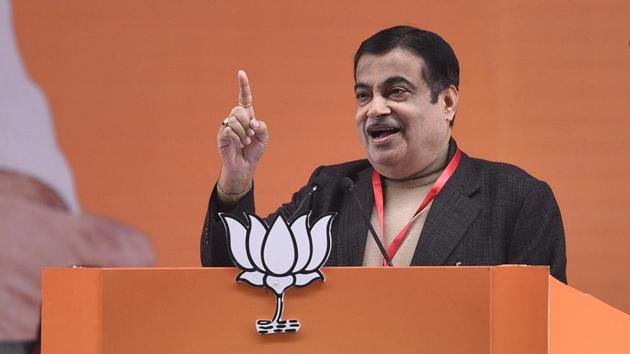A Modi versus Gadkari battle is a fantasy
While it may appeal to those who fear the rise of Modi as supreme leader as evidence of creeping authoritarianism, the truth is that the man from Vadnagar remains the BJP’s biggest asset.
This month marks 25 years since I became a Mumbaikar in exile in the national capital. In February 1994, as I was preparing to leave Mumbai for Delhi, a senior professional colleague had a word of caution: “Remember, Delhi is a cutthroat world which we Maharashtrians find difficult to adjust to. Be careful.” Maharashtrians in general have been relatively marginal to Delhi’s political elite which might partly explain the excitement over the rising speculation of Nitin Gadkari as a potential future prime minister. After all, from YB Chavan to Sharad Pawar, it’s been a familiar tale of Dilli Dur Ast, of missed opportunities and setbacks for politicians from the Western Ghats.

Fast forward now to Gadkari, a seemingly unconventional BJP politician, cut in the Rashtriya Swayamsevak Sangh (RSS) cloth from Nagpur, but just as comfortable in the bright lights of corporate India. From being forced out of Bharatiya Janata Party (BJP) presidentship amid charges of financial irregularities six years ago to now being seen as a possible Plan B prime minister of a BJP-led government, Gadkari finds himself increasingly in the spotlight as an emerging alternative to Modi. Every cryptic remark made by Gadkari is being interpreted as a mark of dissent, forcing him to clarify that he remains a loyal party soldier.
So what explains the importance of Gadkari? First, in a government in which most union ministers are perceived as either underworked or underperforming, Gadkari is among the few who has stood out for actually translating Prime Minister Narendra Modi’s promises into results. As road transport and highways minister, he is seen to have driven the pace of road creation in a mission mode manner. That he has also been entrusted the high-profile Clean Ganga project is a reflection of his growing stature as a minister who is very much a doer.
Second, Gadkari’s proximity to the RSS leadership gives him a power base independent of the BJP’s ruling hierarchy. The monopolistic tendencies of the Modi-Amit Shah duo have allowed limited space for any rival power centres to emerge. Even without being a mass leader, Gadkari is the closest the BJP has to a leader of substance who is not wholly dependent on the BJP’s power couple for his political relevance.
Third, Gadkari’s consensual style of functioning is in sharp contrast to the command and control leadership style that defines Brand Modi. It is the ever smiling, accommodating persona that makes the prospect of Gadkari as a coalition government prime minister so attractive for the restive National Democratic Alliance allies who feel constrained and marginalised in a BJP majority government where an omnipotent prime minister’s office calls the shots. That even the opposition has chosen to embrace Gadkari is a sign that the anyone but Modi brigade is hoping to fish in the BJP’s troubled waters by propping up a more obliging political figure who could entice post-poll allies if there is a hung parliament.
Finally, Gadkari’s business-friendly image could give him the support of India Inc, once the cheerleaders of Prime Minister Modi but now increasingly wary of a regime that offers no special favours to traditional business elites and is accused of disrupting economic cycles with unilateral moves like demonetisation.
But while the idea of Gadkari as PM may appeal to those who fear the rise of Modi as supreme leader as evidence of creeping authoritarianism, the truth is that the man from Vadnagar remains the BJP’s biggest asset. The 2019 election battle is being fought by the BJP as a presidential style election in which the prime minister remains the solo performer. If for the Congress, the party is the family, for the BJP the party is the individual, where the cult of Modi is sought to be magnified. This may trouble old-style ideologues within the sangh parivar but a more pragmatic political outlook demands that Modi’s dominance be recognised by the sangh leadership.
Which is also why those who seek to create a Modi versus Gadkari saffron battle within are building a fantasy narrative. Unless there is a complete meltdown and the BJP loses more than a 100 Lok Sabha seats, there is little chance of an alternate leadership emerging to Modi. In the run-up to the 2014 elections too, a similar 160-notion club was pushed by those who felt the BJP would not cross a certain threshold and would therefore need a leader who was more suited to coalition politics. The Modi wave that propelled the BJP to an astounding 282 seats ensured that all such political assumptions were quickly set aside. Which is why even well-wishers of Gadkari would probably be better advised not to push his candidature too far lest yet another Maharashtrian bites the dust in the manipulative power politics of the Hindi heartland.
Post-script: Earlier this week, Sharad Pawar claimed he was “worried” for Gadkari as he was being projected as an alternative to Modi. Pawar should know, since he has never hidden his prime ministerial ambitions in the past. In the Byzantine world of national politics, it pays sometimes to stay under the radar for as long as possible.
Rajdeep Sardesai is senior journalist and author
The views expressed are personal






